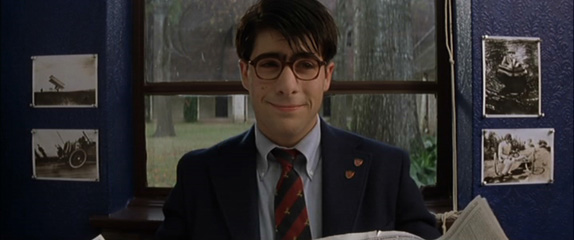 If anything, Wes Anderson is very consistent. His films all share his brisk pacing, deadpan humor, diorama creativity and color, and precise attention to detail. And they’re all good.
If anything, Wes Anderson is very consistent. His films all share his brisk pacing, deadpan humor, diorama creativity and color, and precise attention to detail. And they’re all good.
This is even though each of his nine films is wildly different and ambitious in ways unique to each project. He’s put his quirky, fantastical stamp on coming-of-age romances, family dysfunction dramas, children’s fables and French New Wave cinema. You could make a case that any of Anderson’s films is the “Most Wes Anderson” film. I wrote as much about his previous film, The Grand Budapest Hotel, which found him globe hoping, going to dark places and using his dioramas to examine legacy and loss. That’s all true even though his other films have these qualities in spades, in their own ways.
So where does that leave Isle of Dogs, his second stop-motion animated film following the wonderful Fantastic Mr. Fox? It feels like Anderson at his ugliest, dabbling in washed out horizons, muted colors and grizzly characters, though you can find parallels in his past films. He’s fully embracing his Japanese influences from Akira Kurosawa and kabuki dance, though eagle-eyed viewers must’ve known he’s a fan. And it also feels like his most grim movie, with an immensely percussive score lending gravitas and stakes to an otherwise pleasant story about dogs. You know where this is going.
Isle of Dogs is exactly like all of Anderson’s films and none of them. It dazzles with animation and moods that Anderson has never dabbled in before, and yet it feels at home with his best work. Continue reading “Isle of Dogs”


 The thing about Bill Murray movies is, they often don’t work without him. “Groundhog Day” would be a horrible Adam Sandler comedy if anyone but him played the part, and the same is true of “Ghostbusters.” Aside from all the ugly misogyny that’s being thrown at the movie sight unseen, no wonder everyone is freaking out over a remake of “Ghostbusters.”
The thing about Bill Murray movies is, they often don’t work without him. “Groundhog Day” would be a horrible Adam Sandler comedy if anyone but him played the part, and the same is true of “Ghostbusters.” Aside from all the ugly misogyny that’s being thrown at the movie sight unseen, no wonder everyone is freaking out over a remake of “Ghostbusters.”


